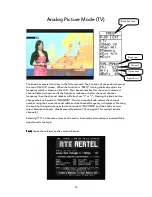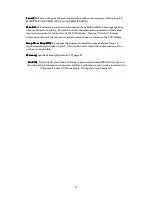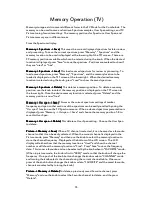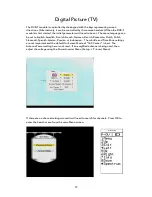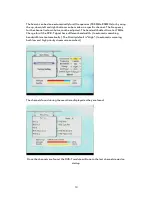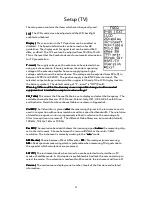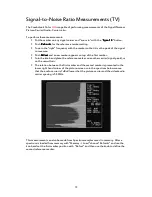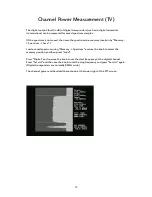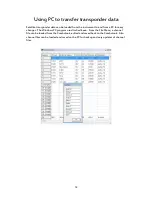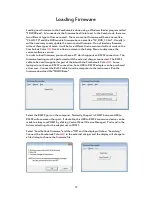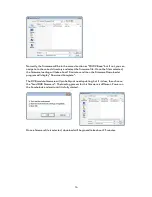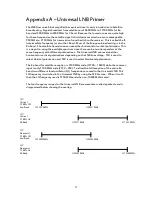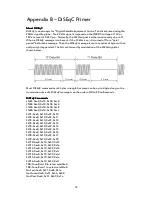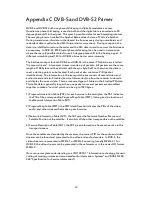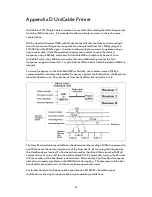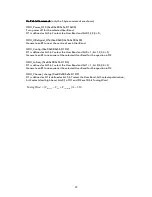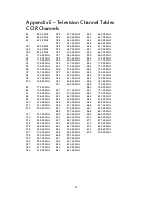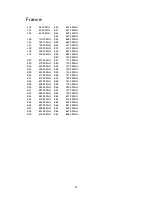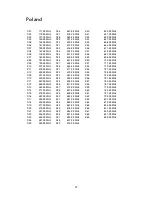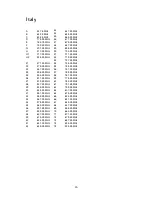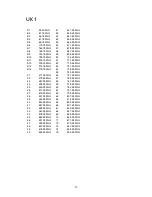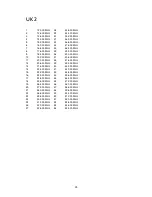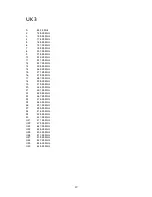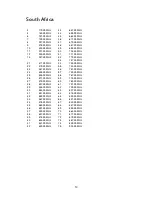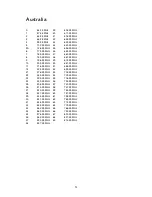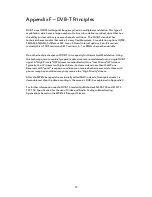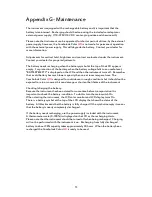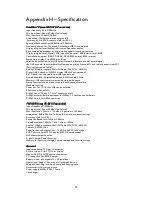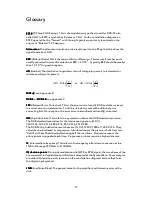
40
Appendix C DVB-S and DVB-S2 Primer
DVB-S and DVB-S2 both use phase shift keying to digitally modulate a carrier.
Quadrature phase shift keying is used in both and the digital data is encoded as a 90
degree phase shift in the signal. This gives 4 possible states for each sampling interval.
The sampling interval is called the Symbol Rate and each state of 2 bits is a Symbol.
During transmission, this data is interleaved to allow recovery during noise bursts and
redundant data is added called FEC (forward error correction). During reception, the
data is re-shuffled to restore the order and the FEC data is used to correct the bitstream
as necessary. In DVB-S2, 8PSK (octal phase shift keying) can be used in transmission
where there are 8 possible states from a 45 degree phase shift in the Analog signal. A
different scrambling and FEC for DVB-S2 allows better noise immunity.
The bitstream output for both DVB-S and DVB-S2 is the same. This bitstream is called
“transport stream”. A transport stream is made up of packets. All packets are the same
length of 188 bytes and they all start with the sync byte 0x47 so that when the data is
read, a starting point can be located. Each packet also contains a PID (packet
identification). The information in the transport stream consists of several video and
audio streams and also SI tables (Service Information) to allow the receiver to decode
and display the correct data. There are several types of tables in the SI called PSI data.
This table data is generally longer than one packet so several packets are assembled
together to make a “section” which can be up to 1024 bytes.
1) Program Association Table (PAT): for each service in the multiplex, the PAT indicates
the PID of the corresponding Program Map Table (PMT). It also gives the location of
the Network Information Table (NIT).
2) Program Map Table (PMT): the PMT identifies and indicates the PIDs of the video,
audio, and other streams that make up each service.
3) Network Information Table (NIT): the NIT gives the Network Number, Name and
Satellite Position of the satellite. It also lists all the other transponders on the satellite.
4) Service Description Table (SDT): the SDT gives information about each service in this
transport stream.
Once these tables are decoded by the receiver, the correct PID for the audio and video
streams can be found and presented to the video and audio decoders. In DVB-S, the
video streams are presented in MPEG-1 or MPEG-2 encoding (usually MPEG-2). For
DVB-S2, the video streams can be presented in these formats or in the newer HD format
MPEG-4.
(For a more complete understanding, see ISO 13818-1 “Information technology, Generic
coding of moving pictures and associated audio information: Systems” and DVB EN 300
468 “Specification for Service Information”)

